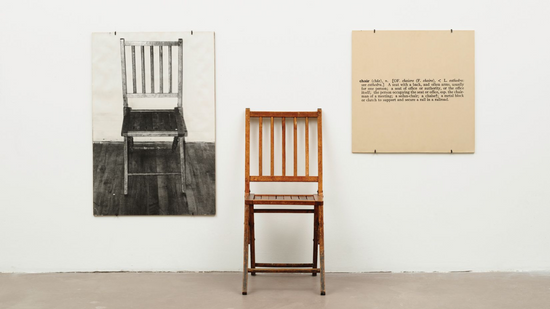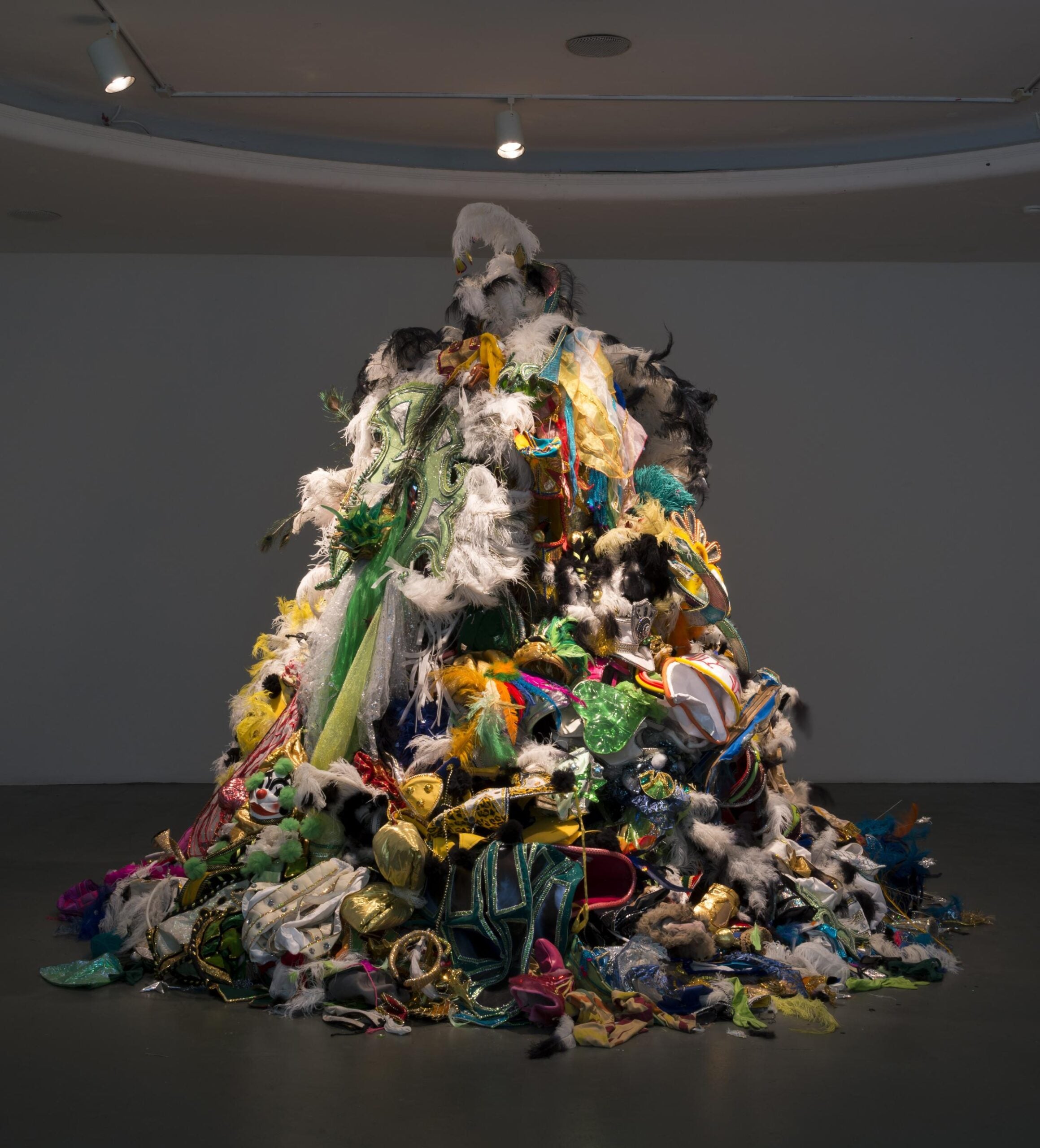
What is Conceptual Art?
In the 1960s, many artists experimented with art that emphasized ideas about objects and materials traditionally associated with artistic creation. In 1967, Sol LeWitt wrote in his essay “Paragraphs on Conceptual Art” that “the idea itself, even if it is not visual, is as much a work of art as any finished product”. Conceptual artists use their work to question the notion of what art is and to critique the underlying ideological structures of artistic production, distribution and exhibition. Conceptual art is a movement that values ideas over the formal or visual components of works of art. It is art in which the idea (or concept) behind the work is more important than the finished art object. An amalgamation of several trends rather than a tightly cohesive movement, Conceptualism took on myriad forms, such as performances, happenings, and ephemera.

How did Conceptual Art come about?
From the mid-1960s to the mid-1970s, conceptual artists produced works and writings that completely rejected the ideas and standards of art. The main idea, that the articulation of an artistic idea is sufficient, implies that concerns such as aesthetics, expression, craftsmanship and commercialization become irrelevant for judging art. This drastically oversimplified thinking, which may suggest to many people that what passes for conceptual art is not really "art" as much as Jackson Pollock's paintings or Brillo Boxes (1964), seemed to contradict all previous art. But it is important to understand that this movement is a succession of avant-garde movements like cubism, Dadaism, abstract expressionism, pop art, who managed to consciously expand the boundaries of art. Marcel Duchamp is often seen as an important forefather of Conceptual art, and his 1917 readymade typeface is cited as the first work of Conceptual art. The movement that emerged in the mid-1960s and continued into the mid-1970s was international, occurring more or less simultaneously in Europe, North America, and South America. Artists associated with the movement tried to circumvent the increasingly commercialized art world by emphasizing thought processes and production methods as the value of work. The art forms they used were often intentionally ones that did not produce a finished object such as a sculpture or painting. This meant that the work could not easily be bought and sold and did not need to be viewed in a formal gallery situation.
It was not just the structures of the art world that many conceptual artists questioned, there was often a strong sociopolitical dimension to much of the work they produced, reflecting a broader dissatisfaction with society and government policies. An example of this is the idea of social sculpture by Joseph Beuys. Although as an artistic movementWhile conceptual art is associated with the 1960s, many artists continue to create conceptual art into the 21st century (such as Martin Creed and Simon Starling).

Conceptual artists successfully redefine the concept of a work of art as their efforts are widely accepted as art, whether by collectors, gallerists or museum curators. Although the term "conceptual art" was used in the early 1960s (Henry Flynt of the Fluxus group described his performance pieces as "conceptual art" in 1961), it was not until the late 1960s that conceptual art emerged as a a movement with definition. Joseph Kosuth's series titled (Art as Idea as Idea) 1966–7; the proposal for an exhibition Air Show Air/Conditioning 1966–7 by English artists Terry Atkinson and Michael Baldwin (founding members of the Art & Language group); John Baldessari's word paintings exhibited in Los Angeles in 1968; and important group exhibitions such as the one organized by art dealer Seth Siegelaub in New York in 1969,January 1-31: 0 Objects, 0 Painters, 0 Sculptors reflected this growing idea-based approach to making art.The term conceptual art was first used to refer to this distinctive movement in an article written by Sol LeWitt in 1967:“In conceptual art, the idea or concept is the most important aspect of the work. When an artist uses a conceptual art form, it means that all the planning and decisions are done beforehand and the execution is a superficial matter.” — LeWitt, 'Paragraphs on Conceptual Art', Artforum Vol.5, no. 10, summer 1967, pp. 79-83
In 1973, a pioneering record of the early years of the movement appeared in the form of a book, Six Years, by American critic Lucy Lippard. The 'six years' were 1966-72. The book's long subtitle referred to "so-called conceptual or information or idea art." 
Conceptual art can be – and can look like – almost anything. This is because, unlike a painter or sculptor who will think about the best way to express his idea when creating with paint or sculptural materials and techniques, a conceptual artist uses whatever material and whatever form is most appropriate to convey his idea – that it could be anything from a performance to a written description. While there is no one style or form used by conceptual artists, from the late 1960s certain trends emerged. Among the first to pursue the notion of idea-based art to its logical conclusion was Joseph Kosuth, who developed a highly analytical model based on the notion that art must continually question its own purpose. Most famously defending his ideas in a three-part essay entitled "Art After Philosophy" (1969), Kosuth argued that it was necessary to abandon traditional art in order to pursue this self-criticism. The artist questioned the notion that art necessarily needed to be manifested in a visual form. Conceptual art was taken to the extremes of art as an idea by Lawrence Weiner in his 1968 "Declaration of Intent", where he stated that he would leave the practice of creating physical art, citing the need not to build something when the idea behind any work of art should suffice, as the artist's intent remains the same (or should, ideally) regardless of whether the work is in physical or merely conceptual form.

The Artistic Collectives
Although Conceptualist artists have forever remained a disparate international group, harboring many ideas about contemporary art, by the late 1960s it was somewhat evident that a loose movement was coming together. In 1968, a series of conceptual art exhibitions vigorously promoted the movement in New York, organized by dealer and curator Seth Siegelaub. In 1969, the Museum of Modern Art in New York brought together several artists from the movement for an exhibition entitled "Information". This event should not be taken without a grain of salt, as Conceptualism was largely critical of the institutional system of museums and their market-oriented interests, the system within which they exhibited.

In 1967, a collective of British artists formed the Art & Language group while teaching art in Coventry, England. Through a series of published periodicals, the group showed an avowed distaste for the involvement of modern art and the market. Over the next few years, many would join the group, whose rotating membership would reach approximately 50 artists before its decline in the late 1970s.
Other artist collectives were equally political in their focus. The Canadian group General Idea had a small membership of three artists, Felix Partz, Jorge Zontal and AA Bronson, who embraced ephemeral works and installations. Acting from 1967 to 1994, in the 1980s his work addressed the pharmaceutical industry and the AIDS crisis. In South America, artists found in Conceptualism an effective path to creativity and political opposition. Conceptualism was particularly attractive there, as it was not an imported style per se, but rather a means of expression without a single frame of reference, whether cultural, aesthetic or ideological. Artist collectives provided anonymity and therefore protection from prosecution by oppressive authorities and the opportunity to make strong social statements.

Conceptual art in the 21st century
While the conceptual art model promoted by Joseph Kosuth and Art & Language can be seen as the epitome of the movement - others explored avenues that were arguably influential. Conceptual art eschewed the conventions of craftsmanship and style to such an extent that it could be said to place a renewed emphasis on content, which had been largely banished under the critical emphasis on form. Emerging during a period of great social upheaval, the central tenant of conceptualism – that the idea is paramount – has found wide application by artists wishing to emphasize diverse social issues. Social issues addressed by international artists such as Hans Haacke, Martha Rosler, Jenny Holzer, Luis Caminzer, Alfredo Jaar and Ai Weiwei include labor and gender relations, museum management, poverty and censorship.
While the movement often emphasized the social construction of the artwork, Conceptualism was not populist and had limited popularity outside the art world due to its mysterious perception. Furthermore, fractures began to develop in the movement in the mid-1970s, leading to the dissolution of the movement. However, this movement inspired subsequent post-conceptual artists, many of whom embraced the material basis of art and the language of visual culture, such as the Pictures Generation led by Cindy Sherman and Richard Prince. Others continued to bypass traditional artistic production through Performance Art or installations. Thus, many of the concerns, and some of his austere style and tactics, linger today in the works of a wide variety of artists, including Andrea Fraser, Tino Sehgal, Gabriel Orozco, Recreate Tiravanija, Glenn Ligon and Damien Hirst.

